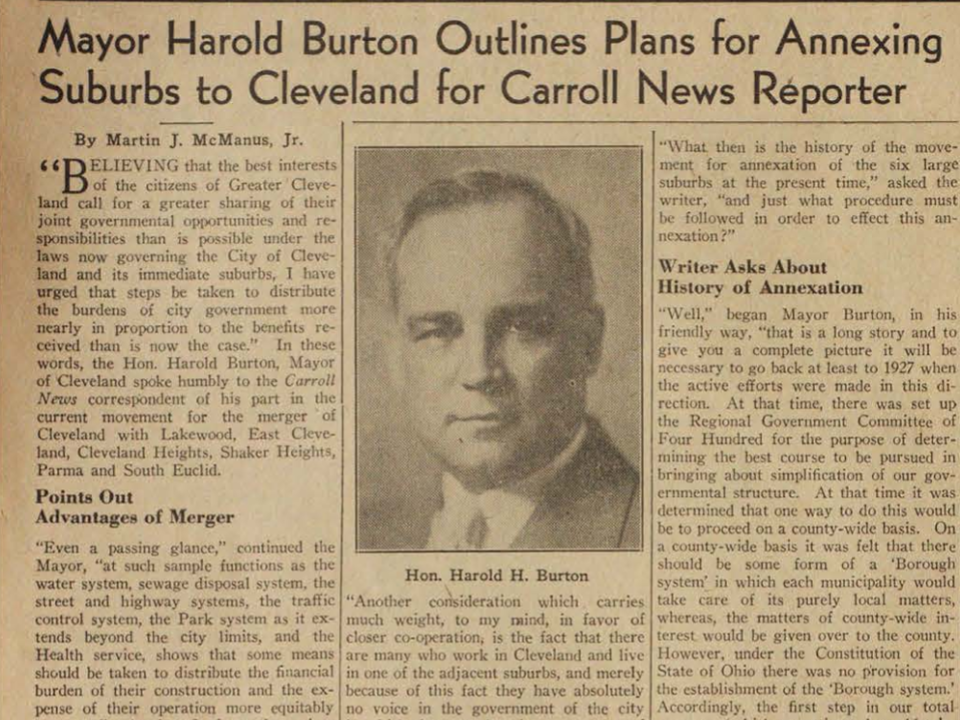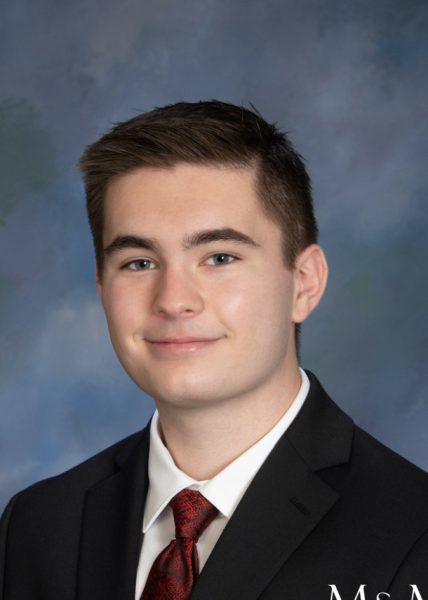This semester, The Carroll News will be turning 100 years old. Though The Ignatian, the school’s combined high school and collegiate journal, existed in the late 1910s, the true John Carroll University news, The Carroll News, was born in 1925.
In that first edition of the news, there was little international acclaim or community notes for the readers. At least 4 stories focused on the football game played in Quetico, Virginia against the United States Marine Corps, where the John Carroll University Blue Streaks won.
There were small snippets, “tidbits” they were labeled, where students described their excitement for a new train line to Daytonーto watch more football or one student, Ed Kelley, who worked on the S.S. American Legion over the summer, and traveled between Buenos Aires, the Panama Canal and San Francisco.
One of the first major steps of the university’s news coverage off-campus was a major 1938 interview with then-Cleveland Mayor Harold Burton, in the story “Mayor Harold Burton outlines Plans for Annexing Suburbs to Cleveland for Carroll News Reporter.” His plan, according to The Carroll News reporter Martin J. McManus, Burton lauded “His part in the current movement for the merger of Cleveland with Lakewood, East Cleveland, Cleveland Heights, Shaker Heights, Parma and South Euclid.” Of course, these plans never came to fruition.
Over 20 years later, this dynamic would change, as in a post-war environment, the shift of the university from a Naval training center back to a proper university would leave some military traces on the university—especially an interest in foreign affairs.
In the first edition of the 1945 academic year, in The Carroll News- Vol. 26, No. 1, students celebrated V-J Day and the end of the Second World War in the “Navy Section” with the front page dedicated to “The Charter Ratified” referring to the beginning of the United Nations, where Navy Editor Richard N. Robertson wrote, “Only the Charter enables peace-loving nations to implement their high purpose with an effective organization will it lead to the control of might through right.”
His co-editor, J. V. McConnell, wrote another story, “We Demand no Territory” stressing that the United States was a liberator, not a conqueror in 1945. When it came to the then-undecided occupation of Japan, McConnell wrote “It makes no difference whether they belong to us or whether we hold them under a trusteeship from the United Nations” as “The United States has no European colonial ambitions and that was all.” The war, to many, and to McConnell, instead was one of our democracy’s fight to end dictatorship.
Overall, by the 1950s, there were regular “H-Bomb” updates following the Soviet-American race for nuclear supremacy, as well as reports on local heroes in 1954 returning from the Korean War. As desegregation, the Vietnam War and a more modern generation of students came to Carroll starting in the late 1950s, a new focus on community news came to define The Carroll News—though none of this would be possible without the original, innovative reporters of the 1920s onwards through the Second World War and the Eisenhower Era of the 1950s.




Jack K. • Feb 24, 2025 at 11:43 am
There’s nothing better than reading old news stories and reconnecting with the past, as a freshman here at John Carroll. If you’re interested in some old news stories, I found a YouTube channel that might interest you. It’s called Dime Store Adventures, and focuses more on the New England region. Hoping to know more about the heritage of my campus in the future.